10 Types of Grass Perfect for Your Lawn

John Keeble/ Getty Images
Many of us crave a well-manicured lawn in our yards but haven't any idea which type of grass is perfect for our lawn. Grass may seem like a simple plant, but it is far from simplistic, and many factors go into selecting the right type of grass for your specific lawn.
There are many types of grass, but only a fraction of those are commonly grown in lawns. Learn about some of the most popular grasses and how to choose between them.
How Many Kinds of Grass Are There?
Grass is one of the most common plants in the world. Plants are considered to be true grasses if they belong to the Poaceae family but many grass-like plants are not true grasses. For example, sedge plants superficially resemble grass plants, but actually belong to a different family.
"Grass" covers a wide array of plants, not just the types suitable for lawns. An ornamental grass such as Maiden grass (Miscanthus sinensis 'Gracillimus') is a true grass but not something you'd want in your lawn. The same is true of the weed, crabgrass (Digitaria spp.).
Grass plants suitable for lawns are often referred to as "turf" grasses (or "turfgrasses"), and it is with these that we are concerned here. There are various cool-season (such as Kentucky bluegrass) and warm-season turfgrasses (like Bermuda grass) that are generally defined by their ability to grow a uniform, durable surface for high traffic, and that can be mowed down to 2 inches or less.
Which Grass Is Best for a Lawn?
The first determining factor in answering this question is climate. Certain kinds of lawn grasses, called "cool-season grasses," are meant for those in northern regions. They thrive when the weather is cool and are hardy enough to survive harsh winters. Other kinds of grasses thrive in warm weather and can hold up in extreme heat, making these "warm-season grasses" suitable for lawns in southern, warm environments.
Beyond this practical factor, your own preferences come into play, such as:
Care: How much maintenance do you want to put into a lawn? If you prefer low-maintenance landscaping, some types of grass will be better than others for you. For example, some types are commonly grown with minimal mowing in mind. The amount of watering required also varies from grass to grass.
Appearance: You may be more attracted to certain types of grass than others. For our purposes, what this refers to mainly is growth habit. Some types grow in clumps, which will displease you if you desire a uniform surface.
Suitability for outdoor activities: Uniformity is also important if your lawn will play host to outdoor activities such as volleyball, frisbee, or badminton.
When you shop for grass seed to install a lawn, you will likely come across a product known as a "grass seed mix." This product promotes grass strengths, which offsets any deficiencies other components of the mix may have.
Kentucky Bluegrass (Poa pratensis)
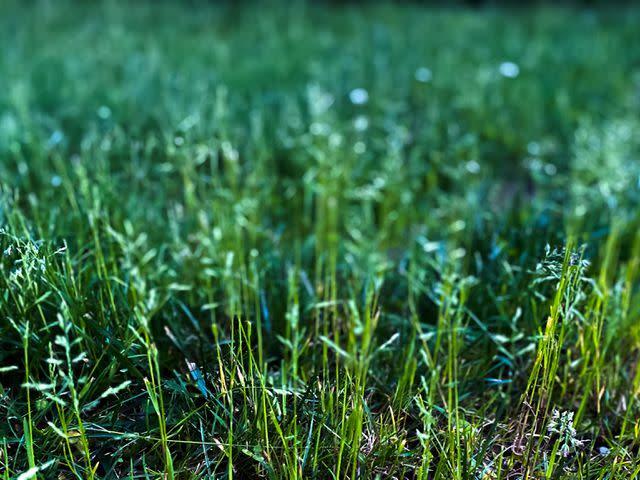
Catherine McQueen/Getty Images
Kentucky bluegrass is the most popular type of cool-season grass. It offers an attractive, uniform surface and is very cold-hardy. One of its few drawbacks is that its beauty relies on being fertilized regularly to a greater degree than with the fescue grasses (it shares this drawback with perennial rye). As an alternative to buying and using chemical fertilizers, committed DIY types can make and apply compost to the lawn.
Shade Tolerance: Poor
Drought Resistance: Poor
Foot Traffic Tolerance: Good
Soil Type: Fertile, well-drained loam
Tall Fescue (Festuca arundinacea)
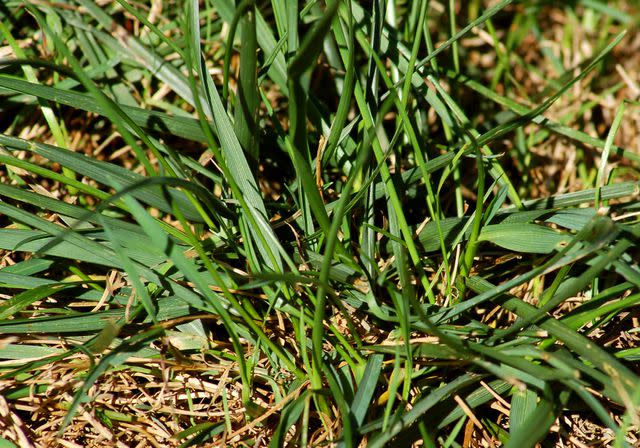
Tall fescue is a fast-growing cool-season grass. In contrast to creeping grasses, which have a horizontal orientation, it grows in upright clumps (giving it the alternate common name of "bunchgrass"). The fescues, both tall and fine types, require less fertilization to look good than Kentucky bluegrass and perennial rye.
Shade Tolerance: Good
Drought Resistance: Good
Foot Traffic Tolerance: Pretty good
Soil Type: Ideally, a fertile, well-drained loam, but tolerates clay better than many lawn grasses
Fine Fescues: Hard Fescue
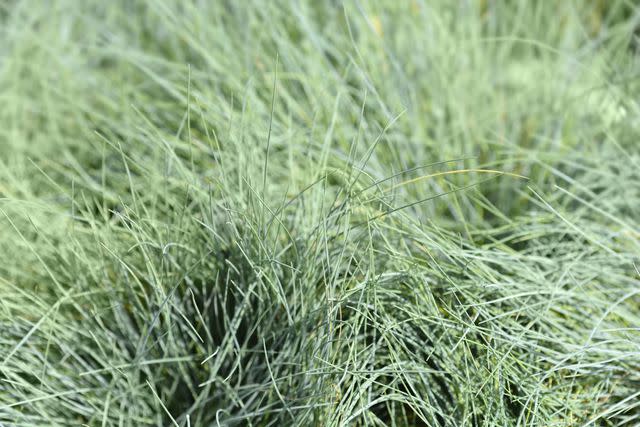
Nahhan/Getty Images
Fine fescues are related to tall fescue but are quite distinct from them in their physical characteristics. While tall fescue bear blades with a coarse texture, "fine" fescues are so-called due to their soft, slim leaf blades. For this reason, fine fescues are favored in lawns by many people: they provide a more comfortable surface for walking barefoot.
These cool-season grasses are also salt-tolerant, making them suitable grasses for lawns close to the ocean. Fine fescues include creeping red fescue (Festuca rubra), chewings fescue (Festuca rubra ssp. commutata Gaudin), hard fescue (Festuca trachyphylla), and sheep fescue (Festuca ovina)
Of these, hard fescue is an excellent choice for conditions with mixed sunlight. That is because it is not just known for its shade tolerance, like the other types of fescue; hard fescue is also known for its ability to hold up well in full sun.
Shade Tolerance: Good
Drought Resistance: Good
Foot Traffic Tolerance: Good
Soil Type: Ideally, a fertile, well-drained loam, but tolerates clay better than many lawn types of grass
Fine Fescues: Creeping Red Fescue
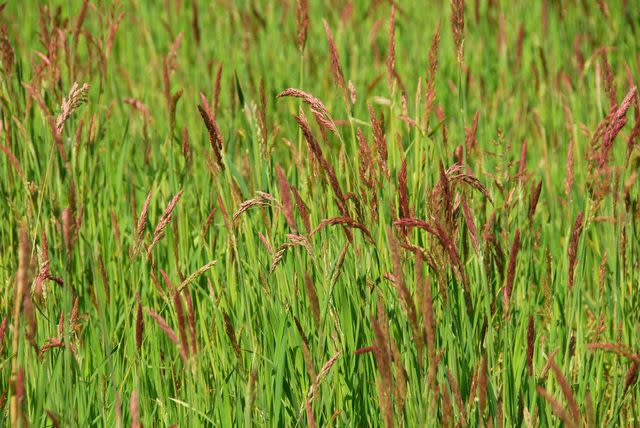
49pauly/Getty Images
Its ability to hold up well to foot traffic and offer a uniform surface make creeping red fescue a popular choice on golf courses. Its superior shade tolerance makes it useful in combination with Kentucky bluegrass in seed mixtures for residential lawns. This cool-season grass spreads (non-aggressively) via rhizomes. It tolerates drought well once established, but it does not tolerate heat well.
Shade Tolerance: Good
Drought Resistance: Good
Foot Traffic Tolerance: Good
Soil Type: Ideally, a fertile, well-drained loam, but tolerates clay better than many lawn grasses
Perennial Rye (Lolium perenne)
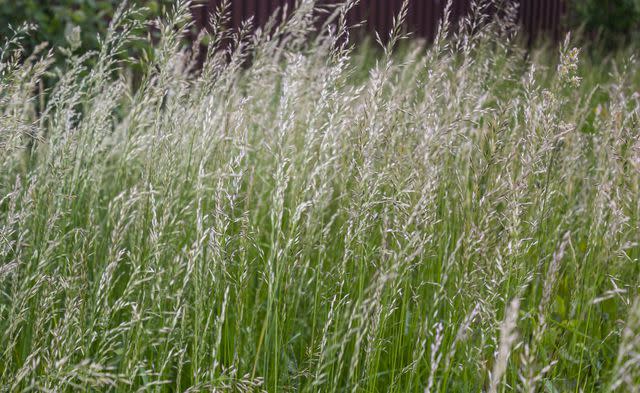
Sviatlana Zyhmantovich/Getty Images
This cool-season grass requires more water and fertilizer than many other types of grass, creating extra maintenance for the homeowner. It also forms clumps instead of spreading via stolons or rhizomes, a feature that can result in a patchy-looking lawn rather than a uniform one. But it does hold up well to foot traffic (from dogs and humans alike).
Shade Tolerance: Poor
Drought Resistance: Poor
Foot Traffic Tolerance: Good
Soil Type: Moist, fertile, well-drained loam with a slightly acidic to neutral soil pH
Creeping Bentgrass (Agrostis stolonifera)
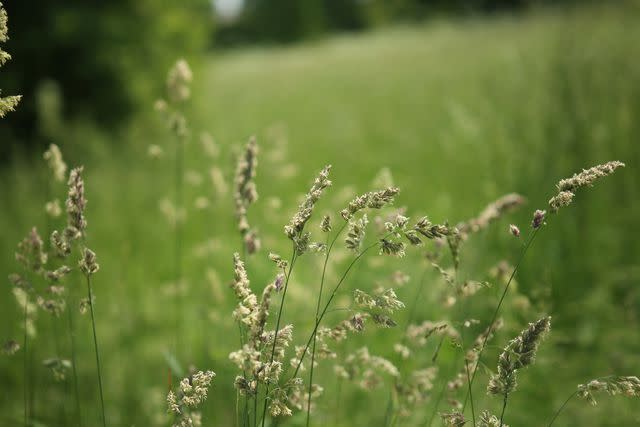
vaitekune/Getty Images
Bentgrass is another cool-season grass uniform enough to be used on golf courses. It can also be mowed short (perfect for golf courses and for homeowners who prefer a carpet-like lawn); most other cool-season grasses should be mowed high for optimal health. But it is high-maintenance, needing a lot of watering and fertilizing. Moreover, its stolons are aggressive and will spread into other types of grass and flower beds.
Shade Tolerance: Fair
Drought Resistance: Poor
Foot Traffic Tolerance: Good
Soil Type: Moist, fertile, well-drained loam
Zoysia Grass (Zoysia spp.)
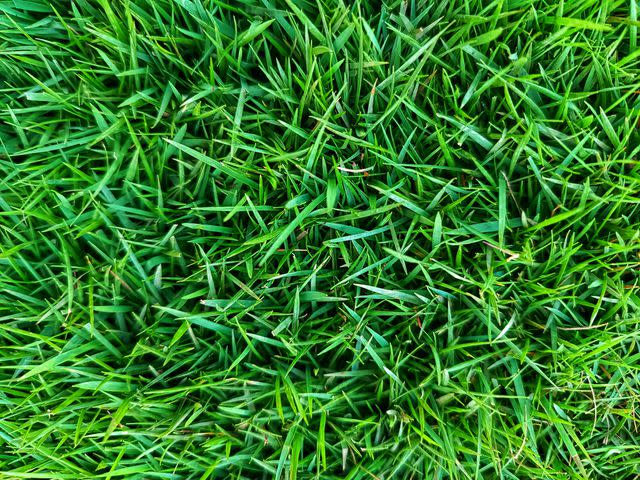
HendSTD/Getty Images
This warm-season grass forms a uniform carpet. Other reasons for its popularity include its ability to tolerate heat, drought, and heavy foot traffic. Furthermore, it requires neither much fertilizer nor much water. On the downside, because it spreads both by rhizomes and stolons, it is difficult to control.
Shade Tolerance: Poor
Drought Resistance: Good
Foot Traffic Tolerance: Good
Soil Type: Fertile, well-drained loam
St. Augustine Grass (Stenotaphrum secundatum)
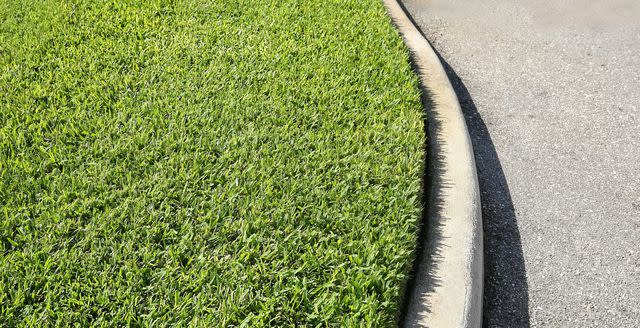
JillianCane/Getty Images
A salt-tolerant warm-season grass, St. Augustine grass is an ideal choice for Southerners who live along the seacoast. Compared with Bermuda grass, St. Augustine grass blades are coarser and broader (about 1/3 inch wide). Bermuda grass blades are less than 1/10 inch wide; they are softer and more delicate in texture. However, St. Augustine grass is easier to control.
Shade Tolerance: Good
Drought Resistance: Poor
Foot Traffic Tolerance: Can handle light foot traffic but wears out under the burden of heavy foot traffic
Soil Type: Fertile, well-drained loam
Bermuda Grass (Cynodon dactylon)
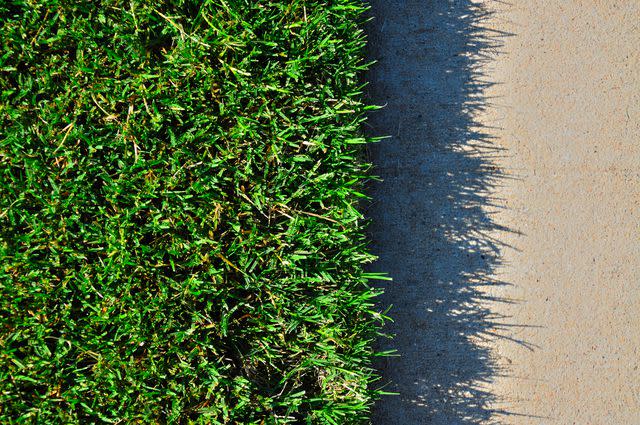
poshfoto/Getty Images
Bermuda grass is hard to get rid of because it spreads by both rhizomes and stolons. So, if you ever try to replace it with something else, it will cause you a lot of work. But, if you don't mind sticking with it, Bermuda grass is low-maintenance. It requires even less fertilizer and water than zoysia. The most exceptional quality of this warm-season grass may be its ability to withstand heavy foot traffic.
Shade Tolerance: Poor
Drought Resistance: Good
Foot Traffic Tolerance: Excellent
Soil Type: Fertile, well-drained loam
Buffalo grass (Bouteloua dactyloides)
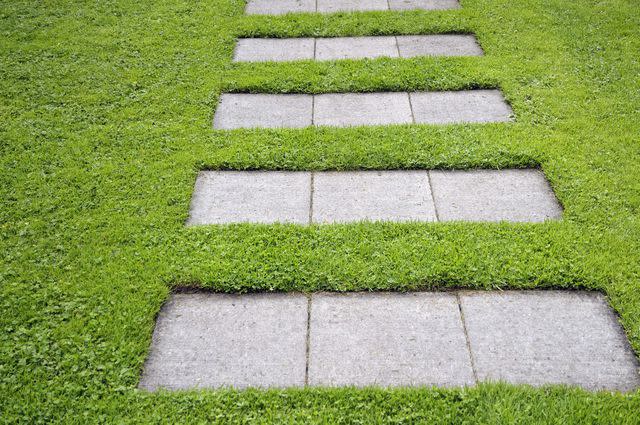
Buffalo grass has many pros and just one major con. The pros of this warm-season grass include relatively good cold hardiness for a warm-season grass as well as heat tolerance, drought tolerance, native status in North America, and it's low patience care.
It has one drawback—it is clump-forming, so it is not a good choice if you want a uniform lawn for outdoor activities. However, its clump-forming nature can be turned into a positive if you are seeking low maintenance.
Shade Tolerance: Poor
Drought Resistance: Excellent
Foot Traffic Tolerance: Fair
Soil Type: Well-drained loam low in fertility
Frequently Asked Questions
What are common types of grass?
Some most common types of grass grown are fescues, bluegrass, and ryegrass. Kentucky bluegrass is widely grown in northern regions and is the most commonly used lawn grass. In more southern regions of the U.S., zoysia is favored.
What is the best type of grass for your lawn?
What grass is best for you depends, first, on where you live. Cool-season grasses are generally grown in the North, warm-season types in the South. Beyond that, it comes down to personal preferences.
What is the easiest grass to grow?
If easiness is defined as low-maintenance, grow a fescue in the North or buffalo grass in the South.

